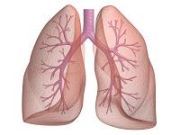Article
Combination Treatment with Umeclidinium Plus Vilanterol Produces Significant Improvements in Lung Function in Patients with COPD
Author(s):
Subgroup analysis from four studies reveals treatment with a once-daily, fixed-dose combination of umeclidinium vilanterol improves lung function at 24 weeks for a broad range of patients with moderate to severe COPD.

Studies have shown that treatment with the novel once-daily, fixed-dose combination of the long-acting muscarinic antagonist umeclidinium and the long acting beta-2-agonist vilanterol produces statistically significant improvements in lung function compared with both placebo and umeclidinium and vilanterol monotherapies in a broad range of patients with COPD.
During a poster discussion session at the 2014 American Thoracic Society International Conference, Meilan K. Han, MD, MS, associate professor in the Department of Internal Medicine, Medical Director of the Women's Respiratory Health Program, and Co-Director of Pulmonary Rehabilitation in the University of Michigan Health System, presented results from a subgroup analyses that sought to determine the effectiveness of combination umeclidinium/vilanterol therapy in specific subgroups of COPD patients.
Data was integrated from the intent-to-treat populations from four 24-week, multicenter, randomized, double-blind placebo- and active-controlled studies in patients age 40 years and older with moderate to very severe COPD (overall n=4,713). These were phase 3 trials for which the reports were included in regulatory submissions for product approval. Subgroups were defined on the basis of gender, age, disease severity, smoking status, inhaled corticosteroid (ICS) use and bronchodilator (albuterol).
For the studies, researchers evaluated two umeclidinium/vilanterol combinations (umeclidinium 125 µg plus vilanterol 25 µg and umeclidinium 62.5 µg plus vilanterol 25 µg) together with those of the corresponding monotherapies. The primary outcome measure was trough FEV1 at Day 169 (Week 24) compared to the baseline value.
Treatment with combination umeclidinium/vilanterol (both dose formulations) provided significantly greater improvements from baseline in trough FEV1 compared to placebo (p<0.001). The magnitude of improvement was broadly similar for the analysis population as a whole and across all subgroups, with the greatest improvement reported for patients who were reversible to bronchodilator therapy. In the patients who were reversible to bronchodilator therapy, the umeclidinium 125 µg plus vilanterol 25 µg combination was more effective than the umeclidinium 62.5 µg plus vilanterol 25 µg combination with respect to the improvement in FEV1 from baseline.
Han said that the 24-week study duration period was typically used for evaluating long-acting bronchodilators in patients with COPD but was not formally recommended in any professional or regulatory guidelines.





